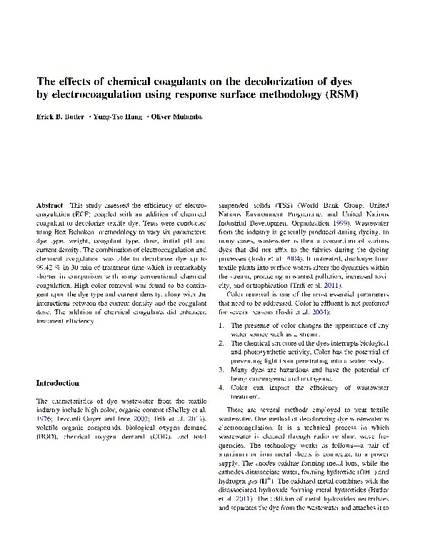
Article
The Effects of Chemical Coagulants on the Decolorization of Dyes by Electrocoagulation Using Response Surface Methodology (RSM)
Applied Water Science
Document Type
Article
Publication Date
9-1-2017
Disciplines
Abstract
This study assessed the efficiency of electrocoagulation (ECF) coupled with an addition of chemical coagulant to decolorize textile dye. Tests were conducted using Box Behnken methodology to vary six parameters: dye type, weight, coagulant type, dose, initial pH and current density. The combination of electrocoagulation and chemical coagulation was able to decolorize dye up to 99.42 % in 30 min of treatment time which is remarkably shorter in comparison with using conventional chemical coagulation. High color removal was found to be contingent upon the dye type and current density, along with the interactions between the current density and the coagulant dose. The addition of chemical coagulants did enhanced treatment efficiency.
DOI
10.1007/s13201-016-0410-7
Version
Postprint
Citation Information
Erick B. Butler, Yung-Tse Hung and Oliver Mulamba. "The Effects of Chemical Coagulants on the Decolorization of Dyes by Electrocoagulation Using Response Surface Methodology (RSM)" Applied Water Science Vol. 7 Iss. 5 (2017) p. 2357 - 2371 Available at: http://works.bepress.com/yung-tse_hung/38/
